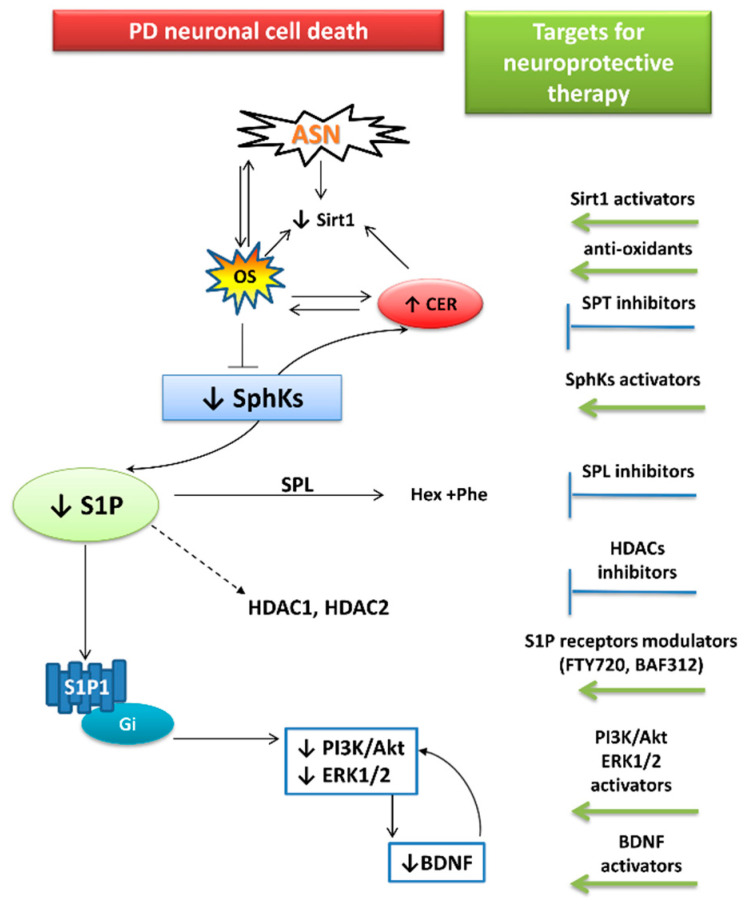Figure 4.
Potential targets for PD neuroprotective strategies associated with sphingolipid signaling and anti-oxidative defense. Arrows terminating with → represent activation, while those terminating with ┴ represent inhibition/deterioration. Abbreviations: PD-Parkinson’s disease; ASN—alpha-synuclein; Sirt1—silence information regulator 1 (sirtuin 1); OS—oxidative stress; CER—ceramide; S1P—sphingosine-1-phosphate; SPL—S1P lyase; Hex + Phe—hexadecenal and ethanolamine phosphate (S1P degradation products); S1P1—S1P receptor 1; Gi—inhibitory G protein; HDAC1, HDAC2—histone deacetylases 1 and 2; PI3K/Akt—phosphatidylinositol 3-kinase/serine/threonine protein kinase B; ERK1/2—extracellular signal-regulated kinases; BDNF—brain-derived neurotrophic factor; FTY720—fingolimod; BAF312—siponimod; SphKs—sphingosine kinases Note that sphingosine kinases were abbreviated as Sphks. However, inhibition under OS conditions mainly affects the Sphk1 isoform synthesizing the S1P pool acting through S1P receptors [9], while Sphk2 synthesizes S1P-inhibiting HDACs. The dashed line connecting S1P (↓S1P) with HDAC1, HDAC2 determines that S1P is an endogenous inhibitor of HDACs, and its decline partially abolishes HDACs inhibition while leading to increased histone deacetylation [90].

